So much Roma, so little time-a! Even with a grocery list sized checklist of monuments and sights to see in the Eternal City, you can’t leave Italy without at least one foodie experience. Food is a huge part of the culture, and one of the best souvenirs you can take home are your new skills whipping up authentic Roman pizza and pastas from scratch in a lot less time than you probably think. That’s why when I got to design my Rome and Venice trip with Monograms Travel, a Rome pizza and pasta making class was top of my Italian bucket list.
The excursions were actually two separate excursions we could select from Monograms’ various options of things to do in Rome. Both ended up being with the same cooking school, located in a beautifully restored palazzo just around the corner from Piazza Navona. Not only were the instructors knowledgeable and really fun, the atmosphere was oh-so-Italian and the resulting meals were some of the best we’ve had in Italy. And that’s saying something, considering we lived in Italy for seven years.
Roman Pizza and Gelato Making Class
Pizza and gelato are some of Italy’s best creations. And though Naples is credited as the inventor of modern pizza, the history of pizza goes back much, much further to ancient Rome. The Romans were eating a type of flatbread with toppings added, perhaps even at the Colosseum during gladiator games since paintings depict vendors selling food and drinks outside.
Though the panis focacius would have been much different than Roman pizza today, Rome still has a prominent place in the history of Italian pizza. The word pizza was first documented in Gaeta, a seaside town in Lazio and not far from Rome, in 997.
There are two types of pizza in Italy: Neapolitan and Roman. The major difference is in the dough, with Neapolitan dough containing more moisture and never any olive oil or sugar. Roman style pizza does have sugar, olive oil or both and is cooked a little crispier, so it can handle more toppings on it than Neapolitan. But the great thing about Italian pizza is the simplicity, and just two or three toppings is plenty for a delicious pizza.
When in Rome! We were making Roman style pizza and, of course, started out with the dough. Not much is needed to make pizza dough: flour, water, yeast, salt and sugar. I’d bet you regularly have most of the ingredients as staples in your pantry.
Our cooking class group kicked things off with a glass of Prosecco and some some suppli, a Roman version of Sicily’s arancini, that our instructors had freshly fried. There would be no hungry chefs in this Roman cooking class.
Before we got to making the pizzas, dessert was the first order of business. We were making a traditional Italian gelato, which you don’t need any sort of machine to make. You just need a little time for it to freeze.
A vanilla gelato, which you could top with fruit, syrups, chocolate sauce or a caramel is shockingly quick and easy to make. Best of all, it’s just four ingredients: cream, egg yolks, sugar and vanilla extract. It’s such a simple dessert, which is easy to impress with.
It’s as simple as separating 4 egg yolks, then mixing the yolks with 4 tablespoons of sugar until the yolks are a pale yellow color. We then folded in 500 milliliters of fresh cream. Add 1 teaspoon of vanilla extract, then freeze until firm. If you’re in a hurry like we were, the thinner you spread the gelato out, the faster it will freeze.
We began with activating the fresh yeast, then mixing it with the flour. A dough starts to form in the bowl, and then we began mixing in the salt. Then we kneaded the dough in to a ball for about 5 minutes. The dough does need to rise for at least 24 hours, so our instructor pulled out dough that had already risen for us.
We got a lesson on how to work the dough. It can get sticky and if you overwork it, you can make holes in the dough. So you want to gently shape it in to a round, thin pizza using the palm of your hand.
Aside from waiting for the dough to rise at least 24 hours, the pizza dough only takes about 15 minutes to mix and roll out. It’s really not as time consuming as you might have thought – or at least as I thought.
And you don’t go through making your own pizza dough to use a store bought pizza sauce. In just about five minutes, we whipped up a homemade pizza sauce using canned peeled whole tomatoes, fresh basil, oregano and a little salt to taste.
Roman pizzas aren’t saucy and just a spoonful of sauce gently spread out over the dough is plenty.
With the sauce spread on our pizzas, we sprinkled a handful of mozzarella on the pizzas and had a selection of toppings to choose from. With Italian pizzas, less is always more. I topped mine with just some mushrooms and sausage, which was always one of the my favorites to order from our local pizzeria.
inRome Cooking School has pizza ovens, so the pizzas cook quickly for just about 3 – 5 minutes at 800°F – 900°F. The entire group’s pizzas were ready in just a few minutes, and we all sat down together to enjoy them. With wine, of course.
I’ve eaten a lot of pizza in Italy, and this was one of the best I ever had. And aside from my own kitchen not being equipped with a pizza oven, the pizzas were really simple to make. It’s definitely a recipe I can easily repeat at home and preheating a pizza stone helps to achieve similar results you get with an actual pizza over.
Roman Pastas and Sauces Private Cooking Class
Unlike my Roman pizza making class, which was a small group of some Monograms guests and some others that booked with inRome Cooking Classes directly, my Roman pastas and sauces class was a private class. And I was particularly excited about learning to make some of my favorite Italian pasta dishes: cacio e pepe, carbonara and amatriciana.
As much as I adore France, really good Italian restaurants serving a variety of pastas and sauces beyond bolognese and carbonara are lacking. And the selection of pasta sauces at the grocery store is disappointing. I got spoiled when we lived in Italy with a selection of made from scratch egg pastas and delicious regional sauces to top it with available right in the grocery store.
Now for a really good bowl of pasta, I need to whip it up myself…from scratch.
Like the pizza, I was surprised at how easy it was to whip up fresh egg pasta. I’ve taken pasta making classes before in Italy, but they’ve always been focused on the pasta types and took a lot longer since we did everything completely by hand.
But at inRome Cooking, we used hand crank pasta machine to roll out and cut the dough into a couple different shapes of noodles best suited for the three Roman sauces we were making. And the machine is inexpensive enough (under $50) to have one in your arsenal of kitchen gear at home.
After rolling the dough out in to flat sheets and just the right thickness with the machine, it was as simple as switching the position of the crank to cut the sheets into pasta noodles. We made tagliatelle, a long ribbon just slighter thinner than fettucine that would be great with the amatricana, and taglionlini, which is similar to spaghetti but thicker and great with the cacio e pepe and carbonara.
Including mixing the ingredients for the dough, rolling it out and cutting it, I had fresh pasta from scratch in about 20 minutes.
Cacio e pepe is one of those Roman pastas that looks and tastes incredibly decadent, but is unbelievably easy to make. Fresh tagliatelle and tagliolini cooks in just 2-3 minutes. Then cacio e pepe is a lot of pepper in some of the pasta water, a heap of pecorino cheese that melts in the peppered water and the cooked pasta stirred in to soak it all up.
Though I haven’t made the pasta from scratch just yet, I’ve already made the cacio e pepe sauce at home with some pecorino I picked up from one of my favorite restaurants that also has a little shop that sells fresh Italian products here in Bordeaux. Once I get a pasta machine, look out!
Once the cacio e pepe was ready, my instructor served up a little for me and little for him and the other workers. There was definitely plenty. I took it in to the 17th century dining room of the cooking school to enjoy.
My stomach got a little break between each of the three Roman pastas, and once I finished my bowl of cacio e pepe we got started on the carbonara. First up was chopping the pancetta, which would be used in both the carbonara and amatriciana.
While we worked on the carbonara, the rest of the pancetta was cooking with some red onions for the amatriciana.
Like cacio e pepe, carbonara is another rich yet easy-to-make Roman pasta that only take a couple of minutes. The sauteed pancetta, some reserved water from the cooked pasta, raw beaten egg and a handful of grated pecorino are whisked together until the sauce thickens and then the pasta is tossed in.
The final Roman pasta was the amatricana, and we added tomato sauce and chili flakes to the onions and pancetta already sauteing on the stove.
Finally, we tossed in the cooked tagliatelle so it could soak up and get coated in the amatriciana sauce.
All I can say is come hungry to this Roman pasta cooking class, because you definitely won’t leave with any room left in your stomach. And as full as I was, it was worth every twirl of pasta and last bite because these were definitely the best I’ve had of all three of these Roman pastas.
Shop This Post
This trip is a project managed by iambassador in partnership with Monograms Travel and other sponsors. However, Luxe Adventure Traveler maintains full editorial control of the content published on this site. As always, all thoughts, opinions, and enthusiasm for travel are entirely our own. This article contains affiliate links. When you shop on Amazon through our affiliate sites, we earn a small commission at no additional cost to you.

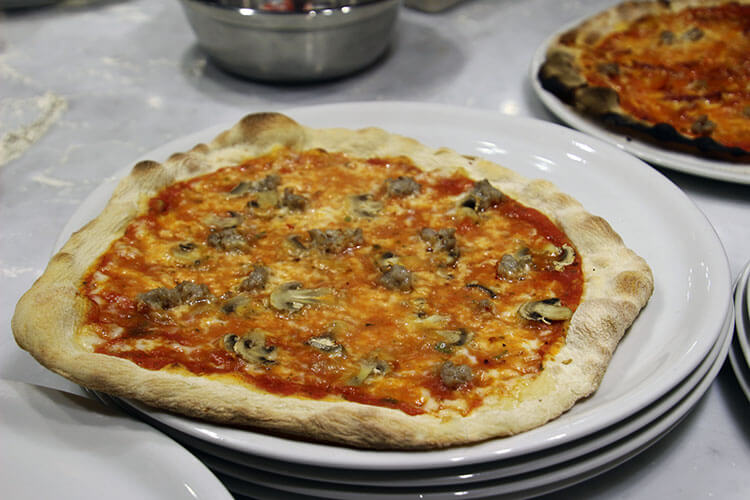
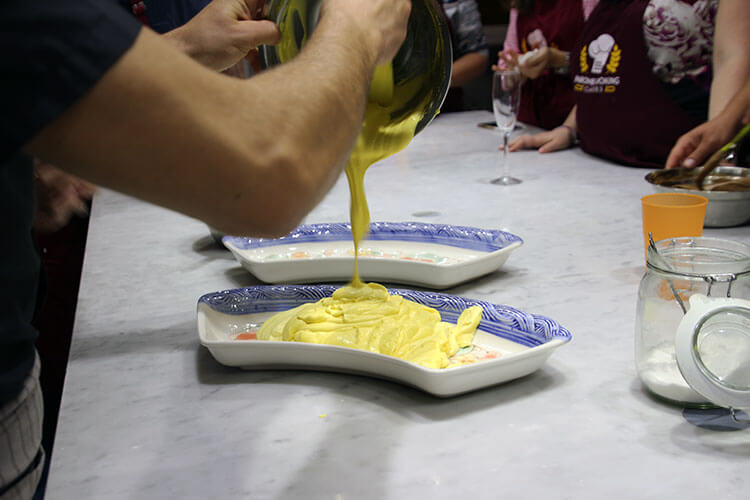
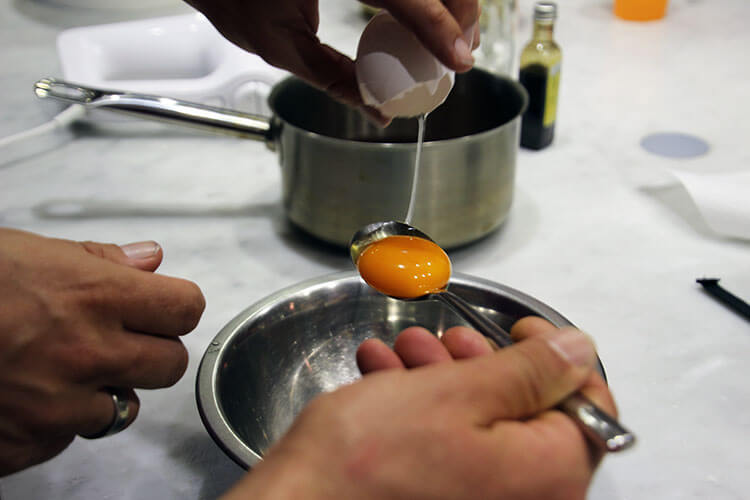


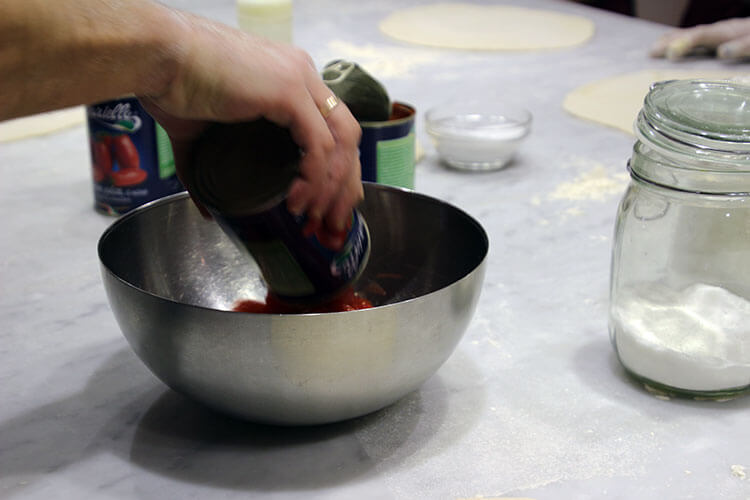
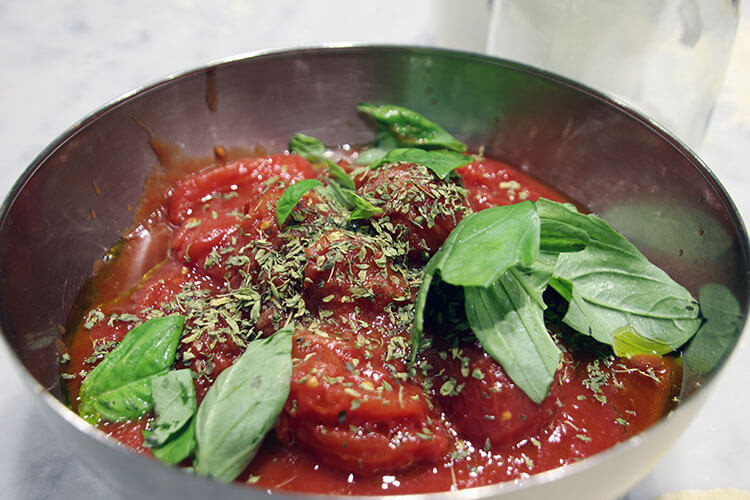
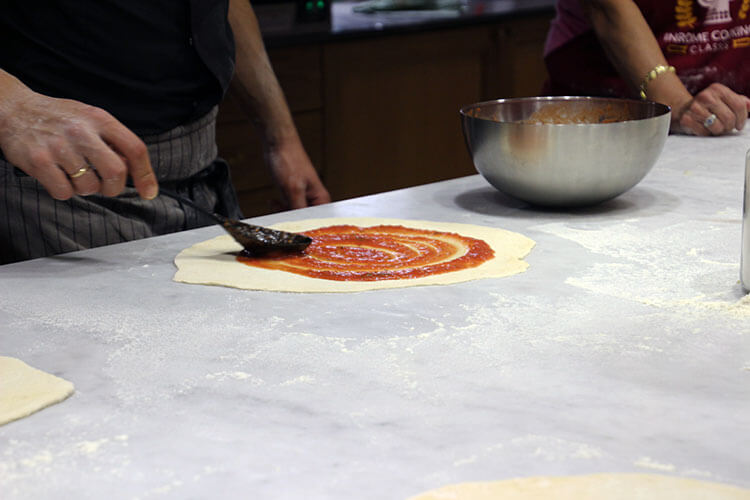
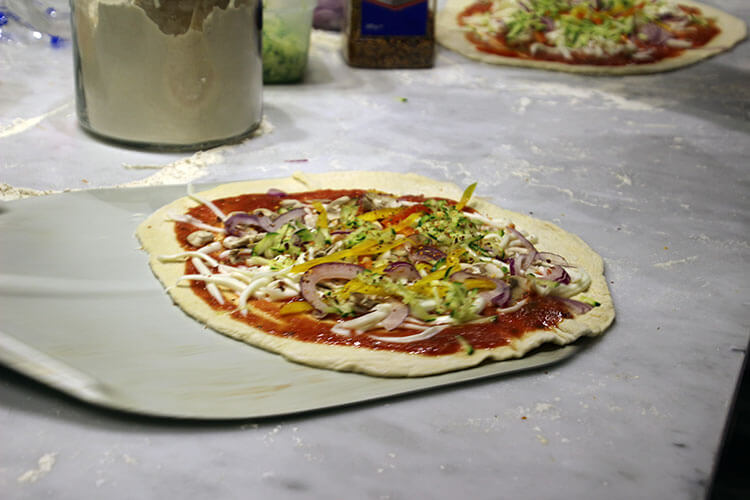
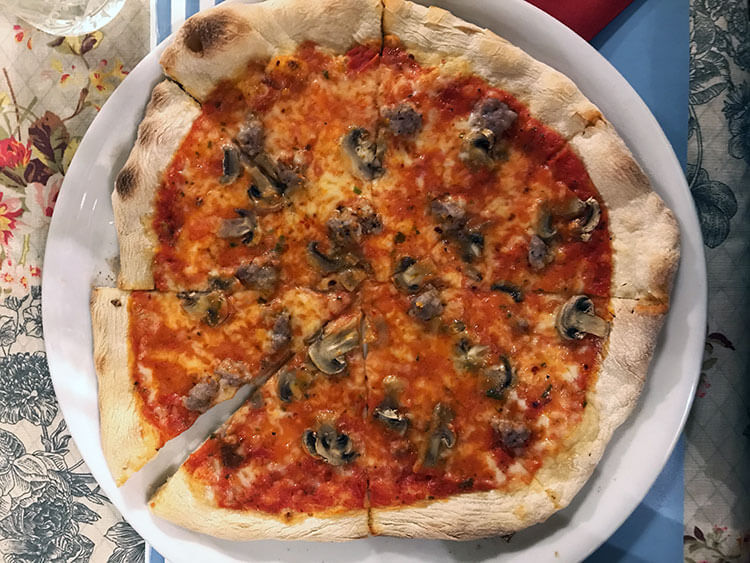
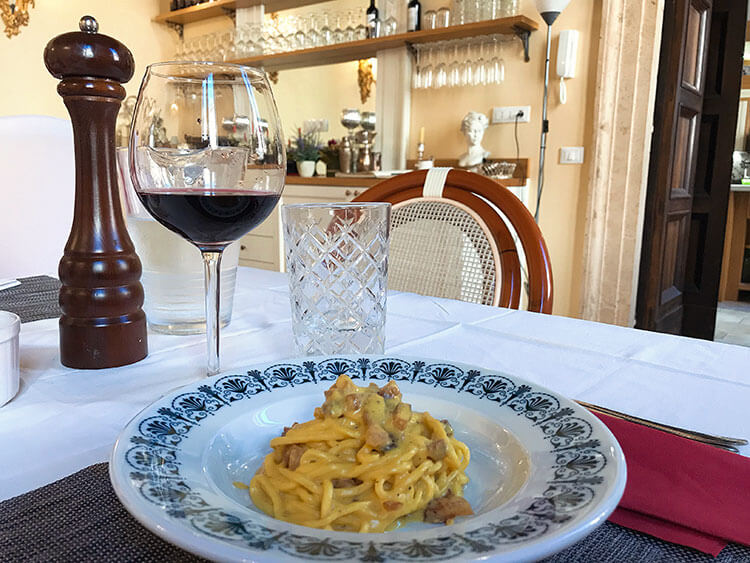
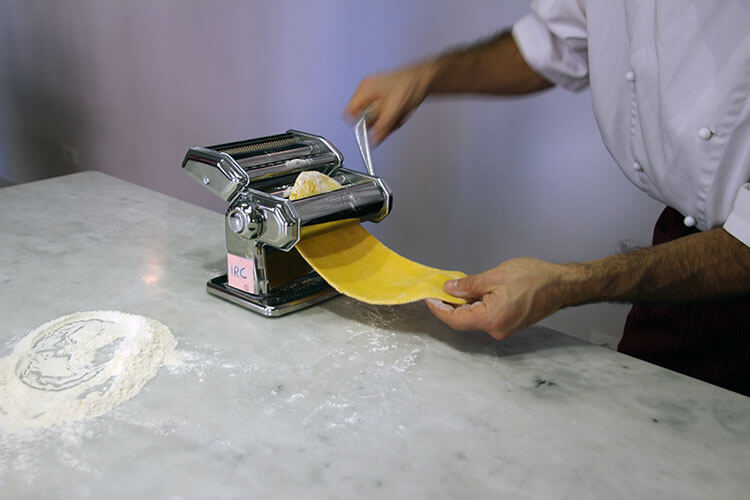
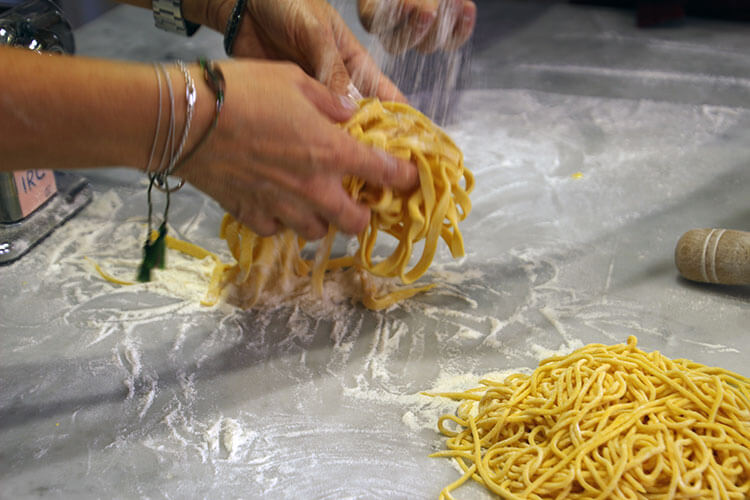
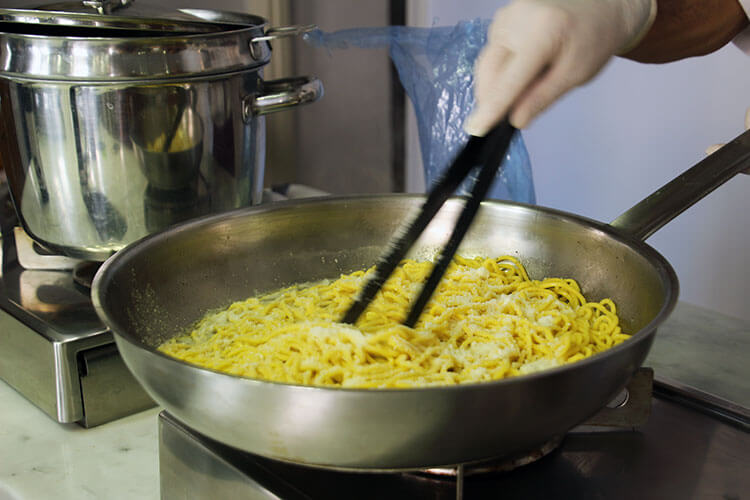
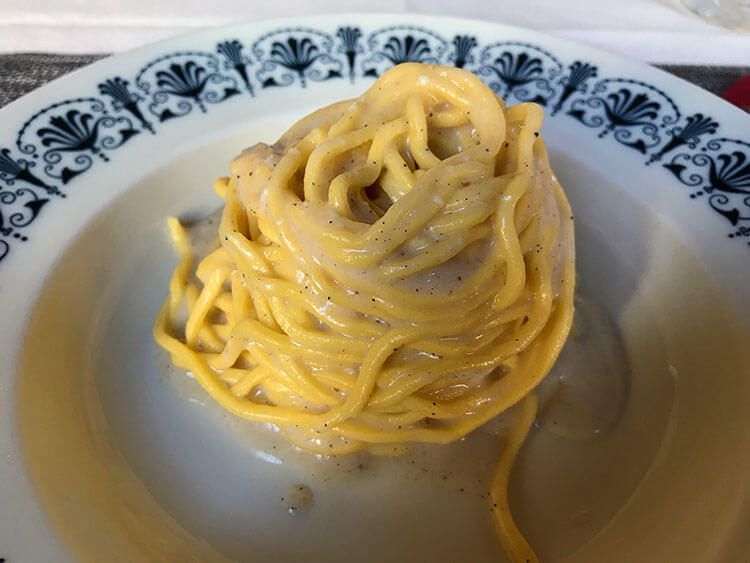
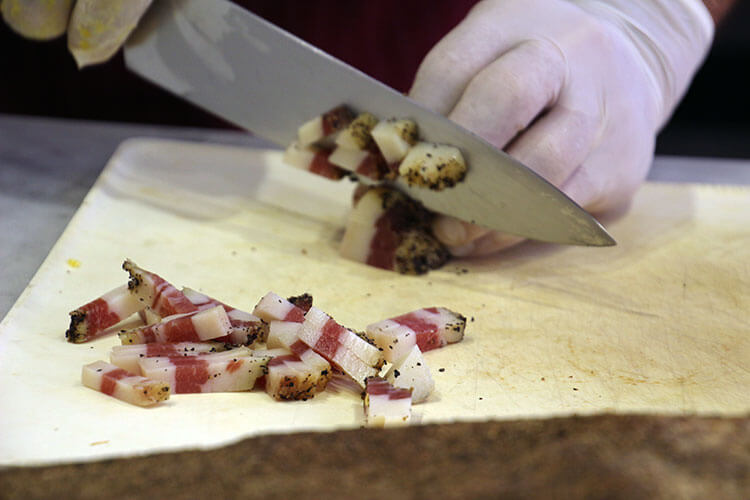
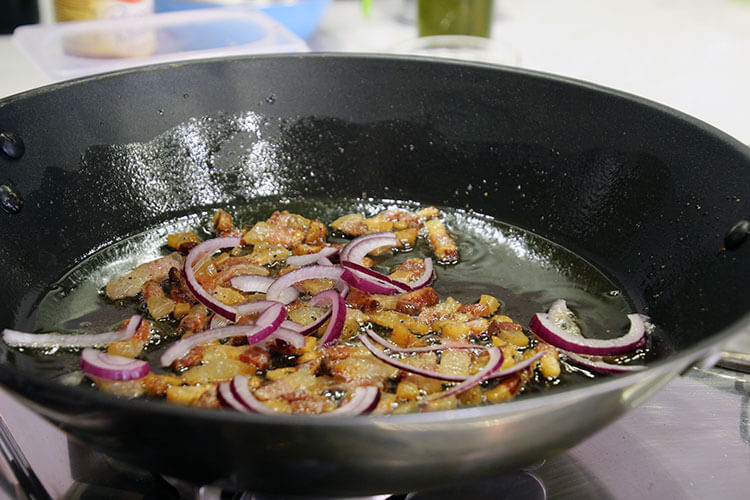
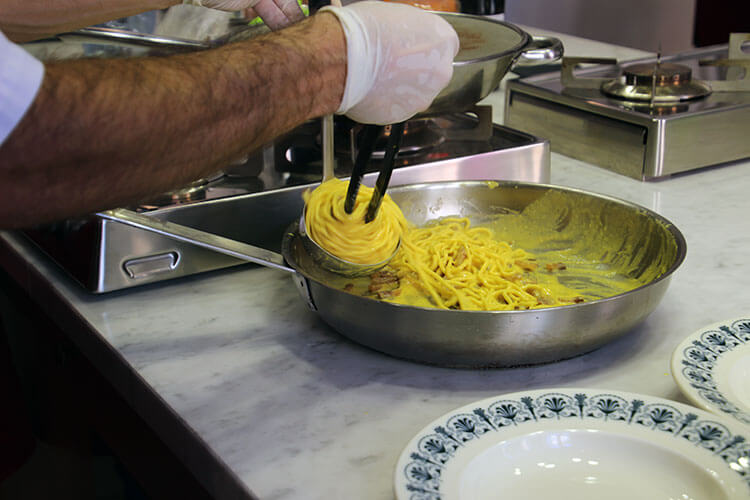
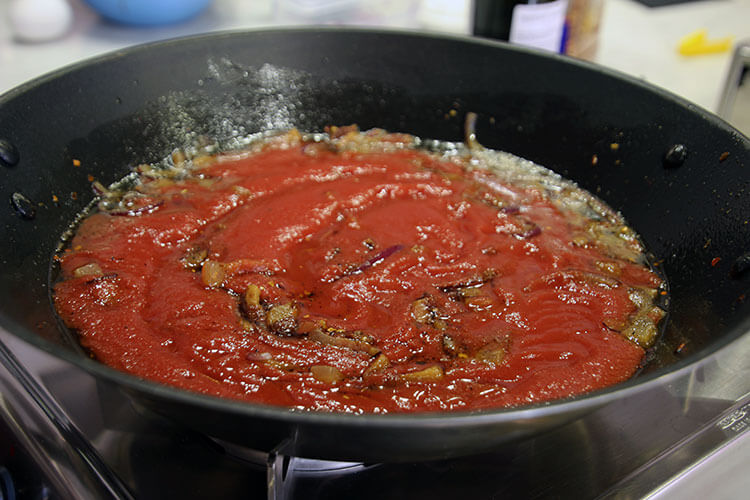
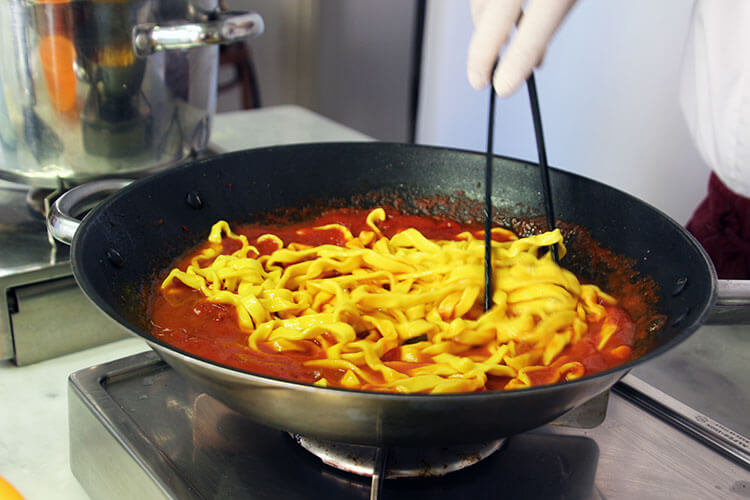
Danijela says
The best pizza you’ve had, and you lived in Italy for seven years? Oh, that must have been some pizza. 🙂 Never the less, judging by your photos, it sure looks delicious.
Have to say, I was always amazed by Italian pasta made from scratch. It must have been great to learn how to do that. I mean, it only takes 20 minutes, but it seems like it’s too time consuming until you do it yourself for the first time, right! Do you do your own pasta now sometimes? 🙂
Anna Faustino says
Oh wow! I would LOVE to do an Italian cooking class. This looks incredible. Your photos are awesome and has got me drooling for some Italian food :p
Melanie Klien says
I did a cooking class in Cambodia and it was fun but not as challenging as I thought. It was a bit too easy. That would be a challenge for me and I’d love to go to a pizza class. Well, actually both, pizza and noodles. Did you buy already a noodles machine? I haven’t made a pizza in such a long time and now I am motivated to do it one day again.
Fiona Maclean says
I love cookery classes when I am travelling – such a great insight into the country’s culture. And I am impressed by the variety of pastas and pizza you made – carbonara is quite tricky to get right I think
Sumti Bhadani says
I love Pizza and Pasta and more than that I love cooking it. I am glad that you got a chance to see this cookery classes which seems to be amazing and wonderful. It is like icing on cake for travellers and food lovers getting such opportunities 🙂
Cathy says
I’ve only done a cooking class in my travels and that’s in Hanoi. I’d love to try this too, isn’t it super fun making your own pizza and pasta? This instantly makes me drool! But it’s quite challenging tho, to work on dough! It can get holes or won’t be perfect! Less is more, agreed to that! Pizza, pasta, and wine are win win!
Samantha Sparrow says
I wish I had taken this class in Rome when I visited this year – I did an amazing food tour (shout out to the suppli, I prefer them to the Sicilian version!), but I would have loved to have known how to make authentic Roman pizza, Yours looks super tasty!
Paige says
Oh my gosh, my stomach is growling over this post. YUM! Italian food is my favorite and this cooking class looks like the ULTIMATE class. Prosseco, Pizza and Pasta? Those are my three favorite \’P\’ words. I think the thing I love most is how simple everything is. Fresh, simple ingredients equals delicious, fresh food.
Brooke says
It’s amazing how simple some of the dishes we’ve always idolized are isn’t it? So many people don’t think about how things are made but then one day someone teaches you and you’re like’ oh that’s it? I could have been doing that!’ (like gelato for example)
For me, my friends are always amazed that I make all of my own dressings for salads from scratch and that I make my own corn tortillas at home. but these are two SUPER simple things 🙂
Meg J says
I’m impressed that everything is so easy to make from scratch… Super surprised that you don’t need a machine to create great gelato, and by how quickly you can whip up a batch. Your pizzas look incredible, I love taking cooking classes when I travel (we’re in Japan right now and had a private sushi home cooking experience today.)
Pizza, pasta, gelato and wine sounds like the perfect combination for a day in Rome!